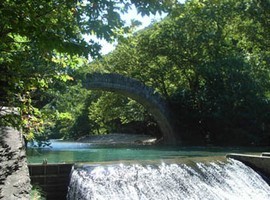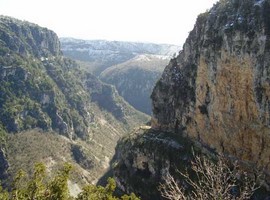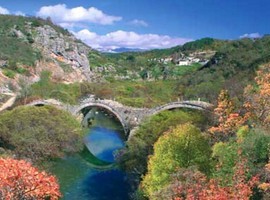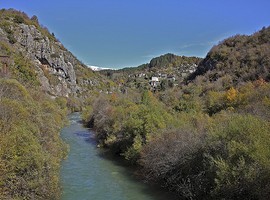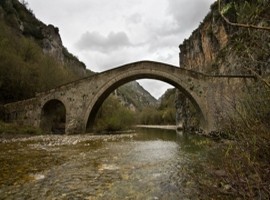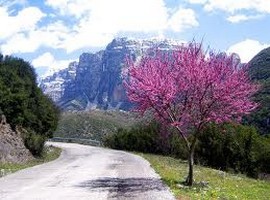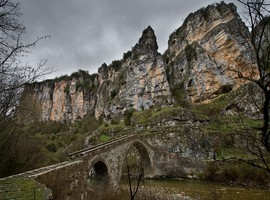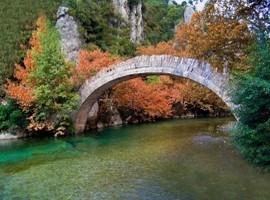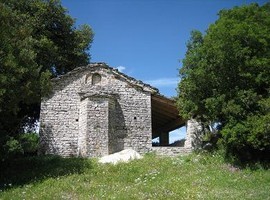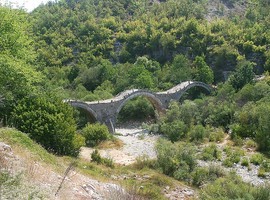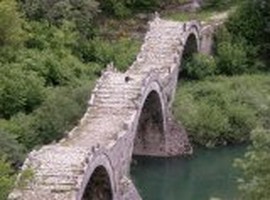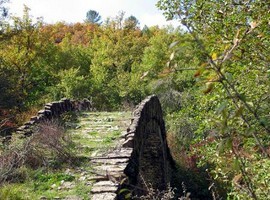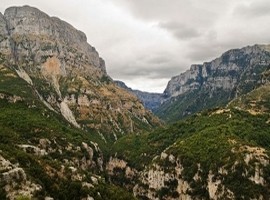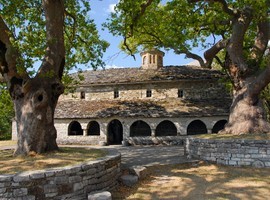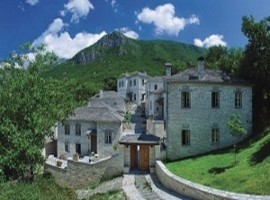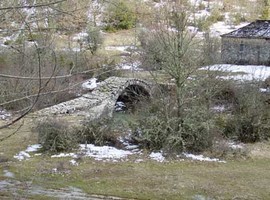Inside the Vikos-Aoos National Park, lies a wonderful and unique place called the Vikos Gorge. It is cherished and sought after for hiking. For hundreds of years, it has not been changed and is a unique part of Greece that is home for beautiful wildlife and is a great little gem of Earth for activities in the Greek nature.
This gorge can be found in an area known as Zagoria. It is in the northwest corner of Greece bordering Albania, in the region of Epirus.
The capital of Epirus is Ioannina. It is a lakeside town with a quaint marketplace.
The Vikos-Aoos National Park is one of ten National Parks that can be found on the Greek mainland. It was created in 1973. In the 31,000 acres it makes up Vikos Gorge, Aoos Gorge, and a part of the Pindus Mountains including Mount Tymphi. Mount Tymphi separates the Aoos Gorge, in the north, and the Vikos Gorge originates on the southern slopes of this mountain.
The Zagori name originates from a Slavic word meaning “behind the mountain”, which is very fitting for the cosy area.
Zagorohoria make up forty small villages that are located inside the area of Zagoria. It stands in together as one big community rather than individual towns. They are all connected to each other by ancient paths and tracks. It wasn’t until the 1950’s that modernized roads reached this beautiful land.
The Guiness Book of Records has listed the Vikos as the deepest gorge in the world. Although, this judgement is based on how the gorge is defined. The gorge is twelve miles long; the one part measures 1.000 metres from rim to rim, while is approximately 900 metres deep. Needless to say, this gorge has been made on a grand scale.
The erosive action of the River Voidomatis is what created this gorge naturally and is in the general north west to south east direction.
In the upper parts of the gorge, the river water flow is seasonal. In the lower parts of the gorge it becomes a year round flow where the tributaries and springs add to the water amount.
The Natural Pools At Papingo
Mainly soft limestone overlaying a harder Grey Dolomite rock makes up the rocks of the region. The soft rocks have migrated further down the gorge due to the cut through of the River Voidomatis and other smaller streams, only to materialize as springs.
Many fissures and deep caves are the outcome of this action of the migrating soft rocks. For instance, in 1965 a cave was discovered, “The Ewes Cave” and is 1.339 feet deep. And yet another, “The Chasm of Epos” which is 1.480 feet deep.
The Vikos Gorge and Zagoria area villages are commonly built in the same style and have a grand authentic feel to them admired by many who visit the area.
Even today, any new buildings must be made in the traditional way using only local building materials.
The “Meochori” is a small square that the village centre around with its shady trees and cobblestones that are also found throughout the village. All the houses have the classic slate tiled roofs and only built from the local stone as well.
Village Square In The Zagoria
The blossoming of the Zagoria town happened between the 17th and 19th centuries. Then many families had to go to other towns in the area making their wealth elsewhere. Many of them came back to build what resemble small forts as their mansion houses from their earnings in other towns. These houses are used as guest houses today.
The local villagers are frequently directly related to the nomadic shepherds, in either one of two tribes. One tribe was thought to be descendents of the north of Romania called the Vlachs. The other tribe descended from the ancient Greeks, The Sarakatsani tribe.
Ancient recipes have been passed down through the many generations and the Vikos Gorge people are now known as herbal healers, curing many illnesses. The medicines used to grow in abundance in the gorge including: St John’s Wart, Lemon Balm, Spearmint, Absinthe and Lemon Grass.
Many mammal habitat this wild and preserved area that is untouched by modernism and the denser areas. Many endangered species have found a refuge in this area because it has only 5 people for every square kilometre.
The Brown Bear can be found here which is a rarity and the Vikos-Aoos National Park is home to them; as well as wolves, foxes, wild cats, and wild horses.
The rare Balkan Chamois Deer can be seen in a small gorge called Megas Lakos, which runs off the main Vikos Gorge.
There are also birds of prey that habitat this area of the Vikos Gorge including the Peregrine Falcon, the Egyptian Vulture and Griffon Vulture.
But the “must see” sight of this gorge are the extraordinarily stunning “hump-backed” stone bridges. The arches in the bridges vary from one hump to two or three. For visitors to the gorge, these amazing natural works of art can be found near the village of Kipi.
